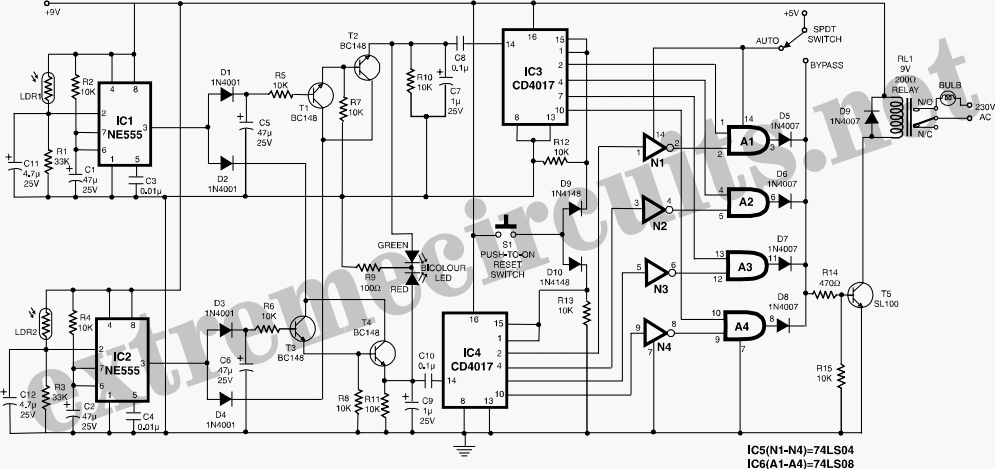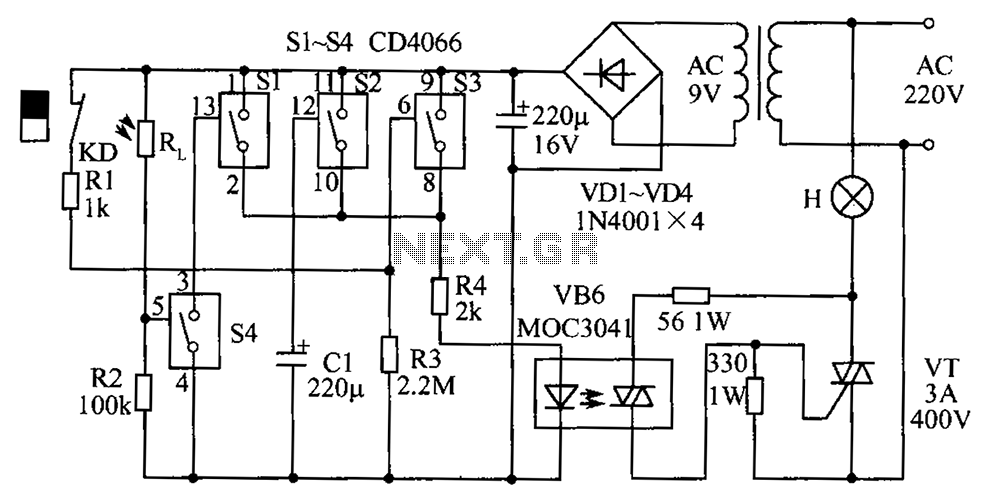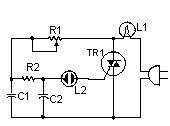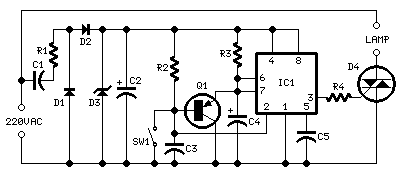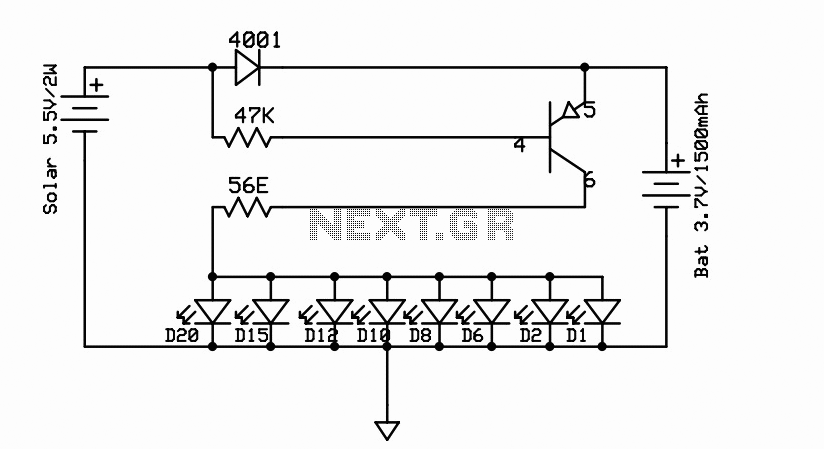
garden lighting
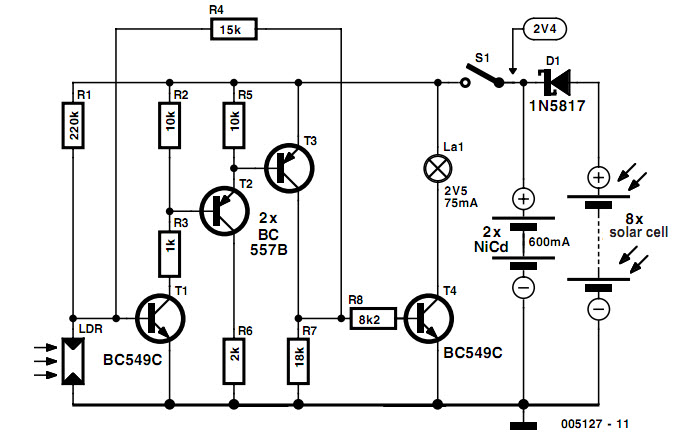
Completely self-supporting garden lamps that utilize solar cells as their energy source are becoming increasingly common. These lamps operate by harnessing sunlight, which is freely available during the day, to provide the necessary energy for illumination during the evening. Their practicality lies in the ability to place them anywhere in the garden without the need for extensive installation, such as digging trenches. The design allows for flexibility in positioning, unlike traditional garden lamps. A typical solar-cell garden lamp consists of several essential components: a light bulb, solar cells, a storage battery, and a charging circuit to facilitate the battery's charging through the solar cells. Additionally, a twilight switch equipped with a light-sensitive cell ensures that the lamp operates only during the evening and night, automatically turning off when the battery is fully discharged. Some advanced models may feature a fluorescent tube instead of a standard bulb, requiring a small converter. The examined model uses a 2.5V/75mA halogen bulb, eliminating the need for a converter. The lamp's structure is simple, comprising a plastic casing, eight solar cells on top, a halogen bulb, two penlight NiCd cells, and a small printed circuit board for the electronics. The lamp retails for approximately 15 pounds and is available in various stores. The internal circuitry is straightforward, with a twilight switch controlling the lamp via a transistor. The solar cells generate a voltage of around 0.45 V under optimal conditions, with a current of approximately 140mA. The charging circuit includes a Schottky diode, allowing current from the solar cells to charge the NiCd cells without overcharge protection, as modern NiCd cells can handle continuous charging currents. This design enables the battery to charge effectively, even during less sunny days.
The solar-powered garden lamp operates on a simple yet effective electronic schematic. The primary components include a light bulb, solar cells, a rechargeable battery, and the necessary circuitry for charging and control. The solar cells, typically arranged in a series configuration, convert sunlight into electrical energy. The output voltage from the solar cells is approximately 0.45 V per cell, with the ideal configuration yielding a total of around 3.2 V required to charge the two NiCd cells effectively.
The circuit includes a twilight switch that detects ambient light levels. When the light drops below a certain threshold, the switch activates, allowing current to flow from the battery to the halogen bulb. The transistor (T4) serves as a switch that controls the power to the light bulb based on the output from the twilight switch. During daylight, the solar cells generate sufficient voltage to charge the NiCd cells through the Schottky diode (D1), which minimizes voltage loss during the charging process.
The charging circuit does not include overcharge protection, as modern NiCd batteries are designed to handle continuous charging currents up to 60mA, which is within the safe operating limits. This feature allows the batteries to reach full charge quickly, ensuring that the lamp operates efficiently even in suboptimal weather conditions.
Overall, the straightforward design of the solar garden lamp not only provides a sustainable lighting solution but also simplifies installation and maintenance, making it an attractive option for garden illumination.Completely self-supporting garden lamps using solar cells as their energy source are gradually becoming more and more common. How do they actually work We took one apart to ¬nd out. From environmental and technical considerations, buying such a solar-cell garden lamp has a lot to recommend it.
It`s a great thing that the energy necessary for t he lamp to burn in the evening can be drawn from the sunlight that is available for free during the day. In addition, such a lamp is enormously practical, since you can place it in any desired location in the garden without having to dig a trench through the lawn or ¬‚owerbeds.
You are also free to change your mind about the best location for the lamp - something that would have unpleasant consequences with ordinary garden lamps. What makes up a typical solar-cell garden lamp A certain number of elements are in any case necessary for it to function.
It`s clear that there must be a light bulb and some solar cells. However, the bulb is naturally not powered directly from the solar cells, so there must be a storage battery and a suitable charging circuit to allow the battery to be charged by the solar cells. In addition, the idea is that the lamp should only burn during the evening and the night, and that needs a twilight switch with a light-sensitive cell.
It`s not necessary to do anything to switch off the lamp, since that happens automatically as soon as the battery is fully discharged. Some of the more luxurious models have a small fluorescent tube in place of a normal light bulb, and in this case a small converter is also necessary.
However, the model that we examined contained a small 2. 5V/75-mA halogen bulb, and thus did not need a converter. As far as the electronics are concerned, the whole thing can thus remain very simple. Our garden lamp consists of a simple plastic structure. Eight solar cells are mounted at the top, and inside there are a small halogen bulb, two penlight NiCd cells and a small printed circuit board for the electronics. As can be seen from Figure 1, there isn`t all that much inside. This lamp costs around 15 pounds, and it can be found in several different shops. The electronics also turn out to be extremely simple. Figure 2 shows the complete schematic of the internal circuitry. The twilight switch is on the left, and its output controls the lamp via transistor T4. To the right are the on/off switch, a diode and the eight solar cells. During the day, as long as there is sufficient light, the voltage generated by the solar cells is 8 G— 0.
45 V under ideal conditions, with a current that depends on the size of the cells ” in this case, approximately 140mA. With less light, less current is supplied. The charging circuit consists simply of a single Schottky diode (D1). The current generated by the solar cells passes through this diode, with its typical low voltage drop of 0.
3 to 0. 4 V, and charges the NiCd cells. There is no overcharge protection. It is not actually necessary, since all NiCd cells can handle a continuous charging current equal to 1/10 of their capacity (60mA in this case), while modern cells are so robust that twice this amount of current does not cause any problems. The advantages of using a somewhat higher charging current are naturally that the battery is already fully charged after several hours of sunlight, and that a certain amount of charging takes place even on rainy days and during the winter.
Solar cells act as light-dependent current sources, so the more light there is, the more current they produce. The voltage is determined by the load, but it can never be higher than the previously mentioned 0. 45 V per cell. Approximately 2. 8 V is necessary to charge two NiCd cells. If we add the voltage drop across D1, we arrive at a required voltage of 3. 2 V. This is 0. 4 V per solar cell. Charging takes place continuously, even when switch S1 is off. It is important to make su 🔗 External reference
The solar-powered garden lamp operates on a simple yet effective electronic schematic. The primary components include a light bulb, solar cells, a rechargeable battery, and the necessary circuitry for charging and control. The solar cells, typically arranged in a series configuration, convert sunlight into electrical energy. The output voltage from the solar cells is approximately 0.45 V per cell, with the ideal configuration yielding a total of around 3.2 V required to charge the two NiCd cells effectively.
The circuit includes a twilight switch that detects ambient light levels. When the light drops below a certain threshold, the switch activates, allowing current to flow from the battery to the halogen bulb. The transistor (T4) serves as a switch that controls the power to the light bulb based on the output from the twilight switch. During daylight, the solar cells generate sufficient voltage to charge the NiCd cells through the Schottky diode (D1), which minimizes voltage loss during the charging process.
The charging circuit does not include overcharge protection, as modern NiCd batteries are designed to handle continuous charging currents up to 60mA, which is within the safe operating limits. This feature allows the batteries to reach full charge quickly, ensuring that the lamp operates efficiently even in suboptimal weather conditions.
Overall, the straightforward design of the solar garden lamp not only provides a sustainable lighting solution but also simplifies installation and maintenance, making it an attractive option for garden illumination.Completely self-supporting garden lamps using solar cells as their energy source are gradually becoming more and more common. How do they actually work We took one apart to ¬nd out. From environmental and technical considerations, buying such a solar-cell garden lamp has a lot to recommend it.
It`s a great thing that the energy necessary for t he lamp to burn in the evening can be drawn from the sunlight that is available for free during the day. In addition, such a lamp is enormously practical, since you can place it in any desired location in the garden without having to dig a trench through the lawn or ¬‚owerbeds.
You are also free to change your mind about the best location for the lamp - something that would have unpleasant consequences with ordinary garden lamps. What makes up a typical solar-cell garden lamp A certain number of elements are in any case necessary for it to function.
It`s clear that there must be a light bulb and some solar cells. However, the bulb is naturally not powered directly from the solar cells, so there must be a storage battery and a suitable charging circuit to allow the battery to be charged by the solar cells. In addition, the idea is that the lamp should only burn during the evening and the night, and that needs a twilight switch with a light-sensitive cell.
It`s not necessary to do anything to switch off the lamp, since that happens automatically as soon as the battery is fully discharged. Some of the more luxurious models have a small fluorescent tube in place of a normal light bulb, and in this case a small converter is also necessary.
However, the model that we examined contained a small 2. 5V/75-mA halogen bulb, and thus did not need a converter. As far as the electronics are concerned, the whole thing can thus remain very simple. Our garden lamp consists of a simple plastic structure. Eight solar cells are mounted at the top, and inside there are a small halogen bulb, two penlight NiCd cells and a small printed circuit board for the electronics. As can be seen from Figure 1, there isn`t all that much inside. This lamp costs around 15 pounds, and it can be found in several different shops. The electronics also turn out to be extremely simple. Figure 2 shows the complete schematic of the internal circuitry. The twilight switch is on the left, and its output controls the lamp via transistor T4. To the right are the on/off switch, a diode and the eight solar cells. During the day, as long as there is sufficient light, the voltage generated by the solar cells is 8 G— 0.
45 V under ideal conditions, with a current that depends on the size of the cells ” in this case, approximately 140mA. With less light, less current is supplied. The charging circuit consists simply of a single Schottky diode (D1). The current generated by the solar cells passes through this diode, with its typical low voltage drop of 0.
3 to 0. 4 V, and charges the NiCd cells. There is no overcharge protection. It is not actually necessary, since all NiCd cells can handle a continuous charging current equal to 1/10 of their capacity (60mA in this case), while modern cells are so robust that twice this amount of current does not cause any problems. The advantages of using a somewhat higher charging current are naturally that the battery is already fully charged after several hours of sunlight, and that a certain amount of charging takes place even on rainy days and during the winter.
Solar cells act as light-dependent current sources, so the more light there is, the more current they produce. The voltage is determined by the load, but it can never be higher than the previously mentioned 0. 45 V per cell. Approximately 2. 8 V is necessary to charge two NiCd cells. If we add the voltage drop across D1, we arrive at a required voltage of 3. 2 V. This is 0. 4 V per solar cell. Charging takes place continuously, even when switch S1 is off. It is important to make su 🔗 External reference
Warning: include(partials/cookie-banner.php): Failed to open stream: Permission denied in /var/www/html/nextgr/view-circuit.php on line 713
Warning: include(): Failed opening 'partials/cookie-banner.php' for inclusion (include_path='.:/usr/share/php') in /var/www/html/nextgr/view-circuit.php on line 713
